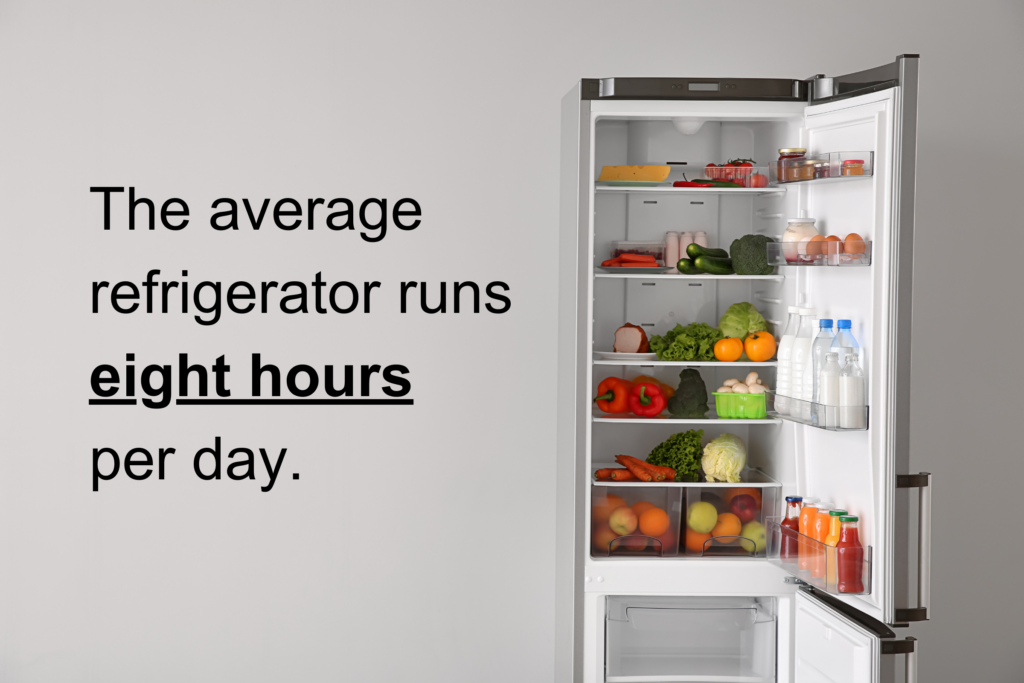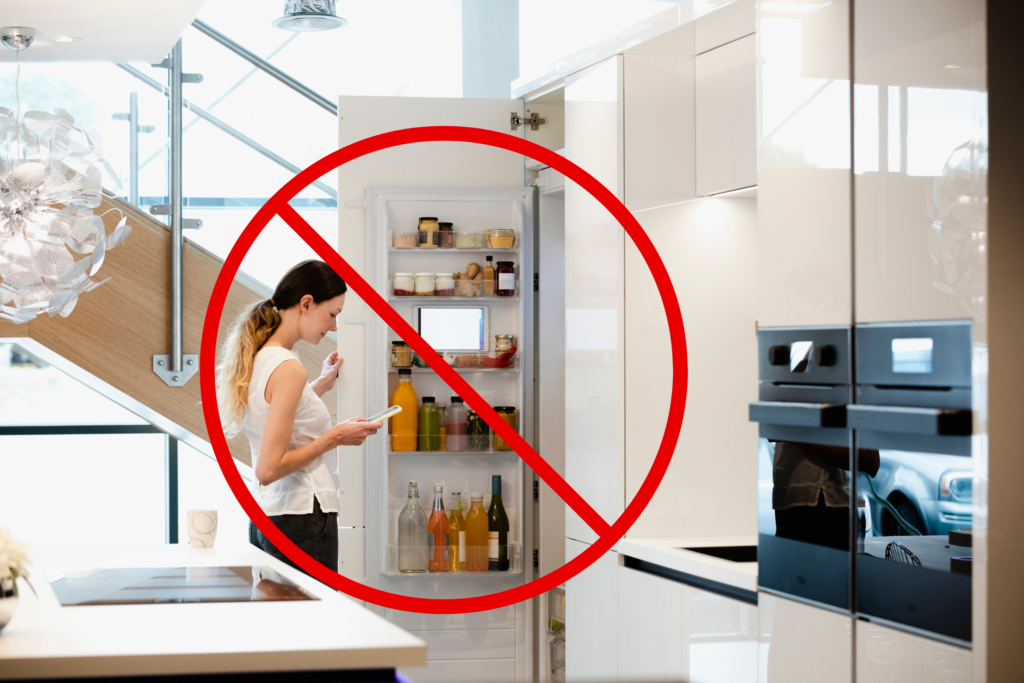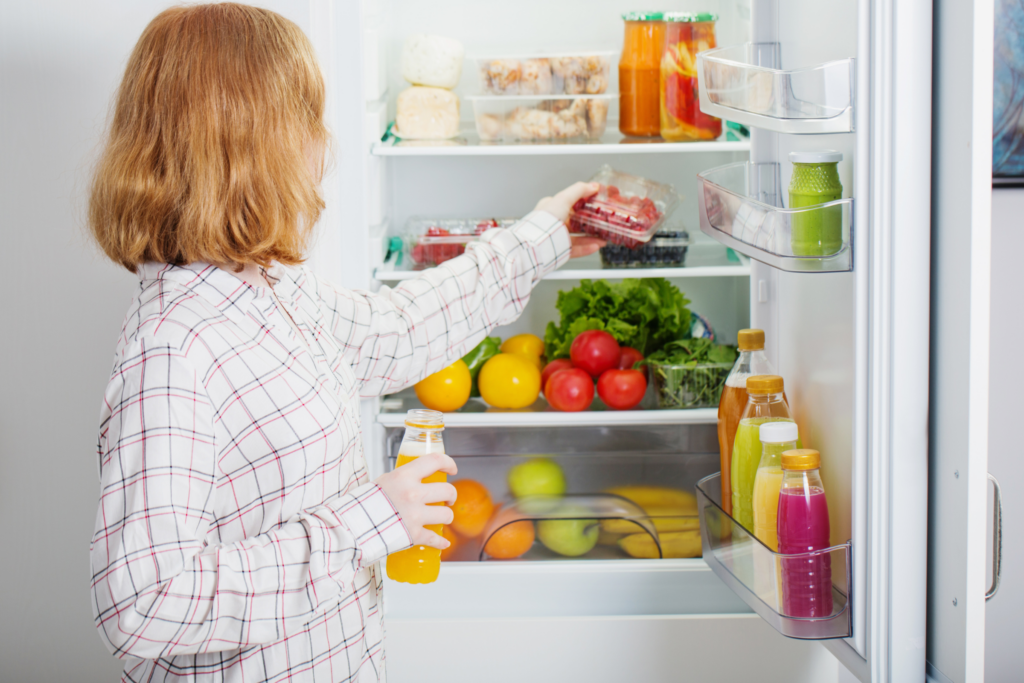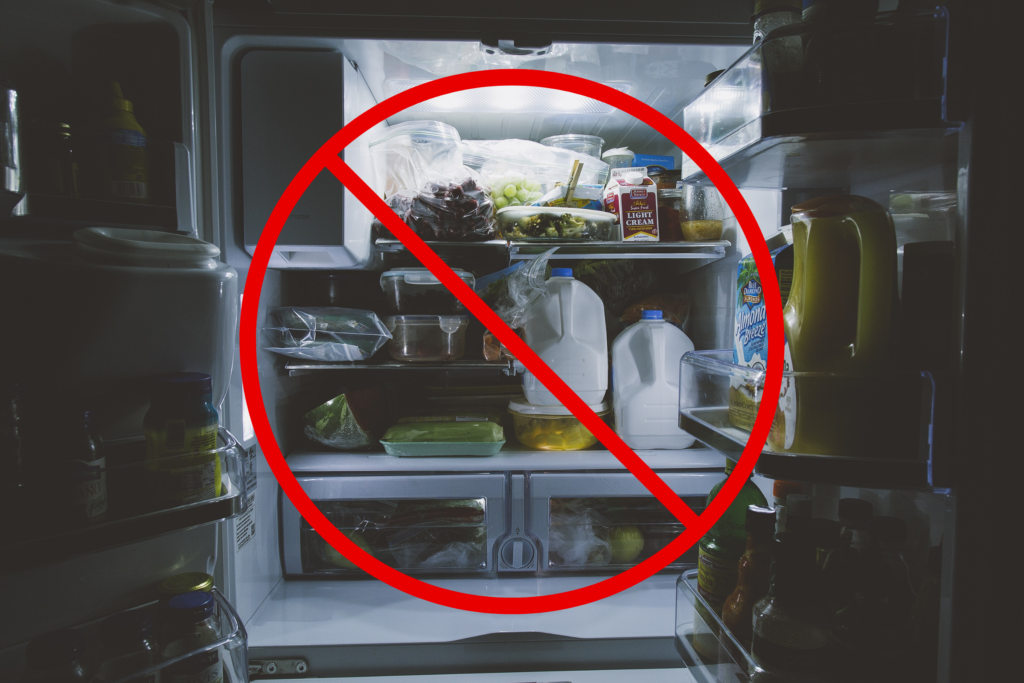Is it Normal for a Refrigerator to Run Continuously? (7 Fixes for Constant Running!)
It’s a good sign when your fridge kicks on, and you hear the compressor humming – it means your fridge is cooling everything inside. But should you hear your fridge running all the time? Is it normal for a refrigerator to run continuously?
It’s normal for a refrigerator to run continuously throughout the day. The average fridge runs for eight hours daily, cycling on and off to maintain the set internal temperature. A new fridge or one with its temperature adjusted can run for 24 hours before it reaches its set temperature.
If your refrigerator is running constantly without stopping, then the temperature could be set too low, there could be a leak in the door deal, the condenser coils could be dirty, or there is a problem with the thermostat, control board, or compressor.
This article answers common questions about refrigerator and freezer run time, including easy fixes for when your fridge runs constantly.
Is it normal for a refrigerator to run continuously?
Refrigerators and freezers run continuously by design, but sometimes it seems as if they run too long.
It’s normal for a refrigerator to run continuously throughout the day. Some new fridges can run up to 80-90% of the day. A refrigerator will run continuously after adjusting the temperature settings or leaving it open for a long period.
When a fridge or freezer is running, it cools the air inside. It’s normal for a fridge to run for hours at a time, especially those in a hot room or ones that open and close often during the day.
Other factors can contribute to how long a fridge or freezer runs, but the average run time is about eight hours daily.
Depending on the design and model of the fridge and the surrounding temperature, it can take about 24 hours to attain a stable temperature.
After this initial period elapsed, the fridge should then cycle on and off. At this point, you can expect your fridge to run 35-80% of the day or 8-19 hours in a moderate climate.
How long should a refrigerator run before shutting off?
Refrigerators and freezers turn on and off throughout the day to keep the internal temperature in check. What’s a standard run time for when this happens? How long should it run before it shuts off?
A refrigerator should run for anywhere between 30 minutes to four hours before shutting off, depending on the size of the fridge, how much food is inside, and the fridge’s internal temperature when it started running.
These factors heavily affect how long a fridge runs after it turns on. The bigger the fridge, the longer it takes for cold air to circulate, making the compressor run longer.
For example, a mini fridge takes significantly less time to get cold because it’s smaller than the average kitchen fridge.
If it’s a new fridge or the thermostat has just been adjusted, it can run constantly for about 24 hours.
These factors also impact the number of hours your fridge might run in a day.
Does a refrigerator run during the defrost cycle?
No, a refrigerator does not run during the defrost cycle.
The motor stops during the defrost cycle, and while in this mode, no matter where you set the thermostat, the compressor will not come on. The motor will start again upon completion of the automatic defrost cycle (in about 35 minutes).
If your fridge fails to resume cooling after the defrost cycle, it could be due to a malfunction of the defrost termination thermostat or a faulty defrost timer.
How many hours does a refrigerator run per day?
All refrigerators are different, but some run more than others. Why is that, and how many hours can you expect yours to run in a day?
A refrigerator runs eight hours per day, depending on the size, set temperature, how often it’s opened, and how much food is inside. New refrigerators run more often than older models because they take time to cool off once installed and are better at maintaining set temperatures.
Standard kitchen refrigerators run for about eight hours on a normal day, with some newer models running 80-90% (or 19-21 hours) of the day.
There are several ways to reduce the run time of your refrigerator, including keeping the door closed and leaving enough space inside for air to circulate efficiently.
The next section covers these tips in greater detail.

7 fixes for when a refrigerator runs constantly
It’s important to note that some fridges run for more time throughout the day than others. Often, this is completely normal, especially when a brand-new fridge runs constantly.
But if your refrigerator runs all the time, there are a few things you can do to potentially make it run less and save yourself some cash on the electricity bill.
Here are six easy steps you can take regarding how to stop a refrigerator from running constantly:
- Check the set temperature for your fridge
- Wait for hot food to cool off
- Close the fridge if it’s not in use
- Re-stock and remove food in batches
- Don’t overload the fridge
- Clean the condenser coils
- Lower the external temperature if possible
Check to see if your refrigerator temperature is too high
The ideal temperature to set your fridge is between 35°F and 38°F (or 1.7°C to 3.3°C), although the U.S. Food and Drug Administration (FDA) recommends keeping your refrigerator temperature at or below 40°F (4°C) to prevent the growth of bacteria that can cause foodborne illness.
It’s important to use a thermometer to check the temperature inside your fridge and adjust the settings accordingly to ensure that your food stays fresh and safe to eat.
Keep in mind, however, that setting your fridge temp too low can not only freeze your food, but also cause the fridge to run constantly.
Wait for hot food to cool off before placing it in the fridge
Do not place warm or hot foods in the fridge. Instead, allow them to cool first to room temperature before placing them in the refrigerator.
Hot food in the fridge causes the appliances’ internal temperature to rise, making your refrigerator work extra hard to cool everything off again. If you want your fridge to stop running constantly or to run less, avoid putting hot food inside.
Close the fridge and freezer door if you aren’t getting food out
Ensure the fridge door is firmly closed, and the seals around it properly seal the space between the door and the fridge’s body. This is the insulation that keeps cold air in and warm air out.
Closing the fridge door prevents excess warm air from going into the fridge, which, in turn, better regulates the internal temperature and causes it to run less frequently.
Keeping the fridge door closed when not putting food inside or taking any out is another way to keep it from running constantly.

Stock and remove food in batches
Avoid unnecessary opening and closing of the fridge door. Instead, stock or remove the food items in batches to minimize the number of times the fridge door is opened and keep your fridge from having to run continuously.
Always close the fridge door once you pull items out, even if you’re going right back in to grab more. Likewise, if you’re stocking the fridge after a trip to the grocery store, close it when you’re not actively putting food inside.

Don’t overload the fridge with food
A tightly packed fridge is a no-no.
Ensure enough space between food items inside the refrigerator compartment for cool air to circulate. This reduces the strain on your compressor and makes it run less.
Otherwise, some parts of your fridge will become warm, and your fridge’s compressor will run continuously to cool them off to no avail.

Clean the dirty condenser coils
Your fridge might be chugging along throughout the day because it needs a good cleaning.
Dust and debris can get up underneath a fridge and accumulate in the condenser coils, which need to be clean to dissipate the heat produced as your fridge cools everything inside. Dirty coils can also cause the fan motor to run too long, leading to potential problems.
When this happens, you need to clean the condenser coils.
To do this, unplug the fridge (you can wait until your food supply is running low or you have few perishables inside) and move it to a spot where you can get behind it.
Then, check for dust and debris accumulation in the condenser coils at the bottom of the fridge, opposite side of the door. If you see dust, grab a vacuum (ideally with a narrow attachment for tight spaces) and vacuum up the debris.
You can use a toothbrush or fine bristle brush to remove dust or debris from tighter spots and then rerun the vacuum if necessary.
Lower the external temperature (or move the fridge to another room)
Fridges turn on to circulate cold air inside. If a fridge is in a hot room, it turns on more frequently to circulate air. Refrigerators in a hot room run longer than those in a relatively cooler room.
This doesn’t always require a fix, as it’s generally safe for a fridge to run 24 hours a day. Also, energy consumption isn’t as high as you might think for fridges that run continuously because most energy is used when the cooling cycle starts instead of during it.
However, fridges running 24 hours a day might require additional upkeep and maintenance on individual fridge parts.
Why is my new fridge running constantly (and is it normal)?
It is normal is a brand new fridge runs constantly. Sometimes, it may run for up to 24 hours before attaining the set temperature.
A new fridge runs constantly to set the internal temperature. It’s normal for a new fridge to run for 24 hours after plugging it in. To reduce the run time of a new fridge, let it cool to the set temperature before putting food inside.
After this initial period, you can expect it to stop running constantly and start cycling continuously as it maintains the temperature.
Whenever you are planning to buy or just bought new home appliances, it can be helpful to read customer reviews for the product to see what other buyers are experiencing and what isn’t normal.
Summary of Is it normal for a refrigerator to run continuously?
It is normal for a new fridge to run continuously or for one in use to do so if the thermostat has just been adjusted.
To keep it from running continuously, don’t put hot food inside, close the fridge door fully, stock and remove food items in batches, don’t overload the fridge, and clean its coils regularly.
Of course, if you aren’t able to troubleshoot this issue on your own with this guide, it might be a good idea to request service for the fridge (hopefully, through warranty). If you can schedule service through warranty, then you won’t have to cover the cost of replacement parts.
Let Us Know How We’re Doing!
Did this expertly prepared resource answer your question?
Do you have another question about home maintenance, home improvement projects, home appliance repair, or something else?
Get more information, send in questions and keep the discussion going by contacting the I’ll Just Fix It Myself company customer service team at at 1-800-928-1490 or Email us at [email protected]
